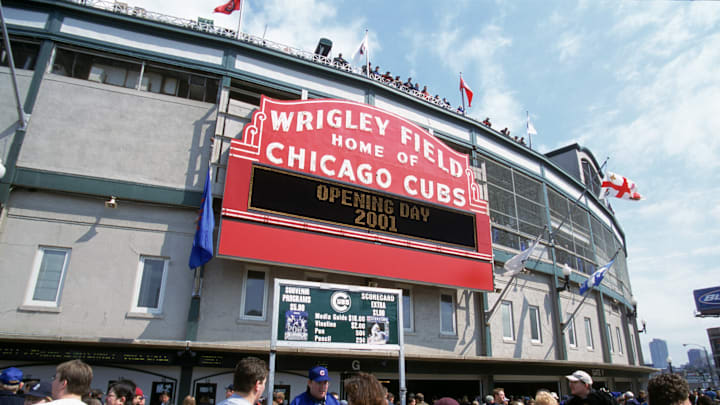The Chicago Cubs originally went by many different names in the early portion of the team's distinguished history.
Over the course of 149 years, the team went from being one of the original trailblazers of professional baseball to one of the most recognizable sports brands in the country, with the longest championship drought in American sports squeezed in between. The team didn't land on the name "Cubs" until three decades after its formation.
Chicago White Stockings: 1870-1887
Although many sources claim they were originally founded in 1870, the team did not play for several years due to the Great Chicago Fire. The Chicago White Stockings joined what would become the National League in 1876 as one of the organization's eight founding members. This marks the team's official start in organized baseball that would later form into MLB.
In this era, many clubs were given their names based on what reporters or fans would come up with to describe a team. In Chicago's case, the name "White Stockings" came from the white long-sleeved stockings the team featured on its uniforms.
This era of the White Stockings was dominated by Adrian "Cap" Anson, who is regarded as one of baseball's first superstar players. He played 27 consecutive seasons for Chicago, which is still tied for the most seasons played ever. In addition to being a player, Anson became a manager and eventually a minority owner of the White Stockings. Anson is also credited with pioneering strategic tactics like the hit-and-run and rotating starting pitchers.
Anson is also one of the game's most controversial figures, as he played a large role in establishing segregation in baseball. An article from the Sun-Times says Anson refused to let his team take the field if the opposing team included Black players. Discrimination in baseball would persist for decades until 1947 when Jackie Robinson made his landmark debut for the Brooklyn Dodgers and broke the color barrier.
Chicago Colts: 1890-1897
At some point around 1890, the media began referring to the Chicago team as the "Colts" or "Anson's Colts." This is also the year many players began flocking to a new "Players League," which Anson and others mocked as inferior. The Players League only lasted a season after Anson repeatedly bashed it in the media.
Chicago Orphans/Remnants: 1898-1907
Anson retired as a player in 1898 at 45 years old. Having served as the team's star player/manager for nearly three decades, he was seen as a father figure and fixture for the team. After his departure, reporters began referring to the Chicago team as Orphans, garnering the team a new nickname.
Other longtime players for the Colts had either retired or left baseball due to injury around this time, making the Orphans name more popular. Media outlets and fans referred to the team as The Orphans, The Remnants, The Colts until a new name began dominating the team's identity in 1907.
Chicago Cubs: 1907-present
The term cub was reportedly used to refer to young baseball players in the 19th and early 20th century. It first appeared in reference to the Chicago team in 1902 by sports writers for the Chicago Daily News. Although some newspapers still used Colts, Remnants and Orphans, the Society for American Baseball Research suggests that the name Cubs was universally used by fans and newspapers by 1907.
1907 is also when Cubs first started being used on the team's scorecards. In the 1907 World Series, the Cubs players were also issued jackets with a large bear figure on each sleeve. This Cubby bear logo was later incorporated into the team's uniforms in different forms over the proceeding decades.1907 was coincidentally the first World Series that the Cubs would win in addition to 1908 and 2016.
The Cubs moniker even predates the team playing at their iconic home of Wrigley Field. The ballpark first opened in 1914 as Weeghman Park, although the Cubs didn't play their first home game there until 1916. After the team was purchased by chewing gum magnate William Wrigley, he renamed the park after himself in 1926. Wrigley Field is the second oldest MLB stadium after the Boston Red Sox's Fenway Park, which opened in 1912.
